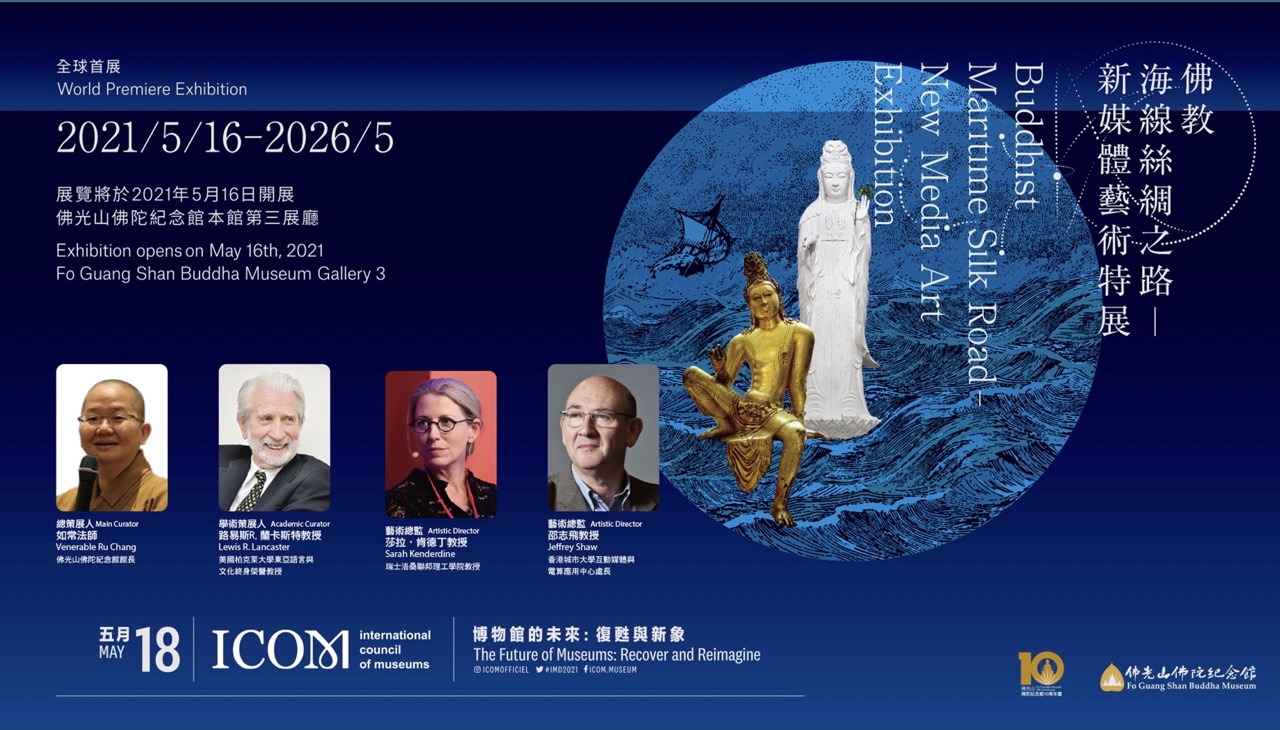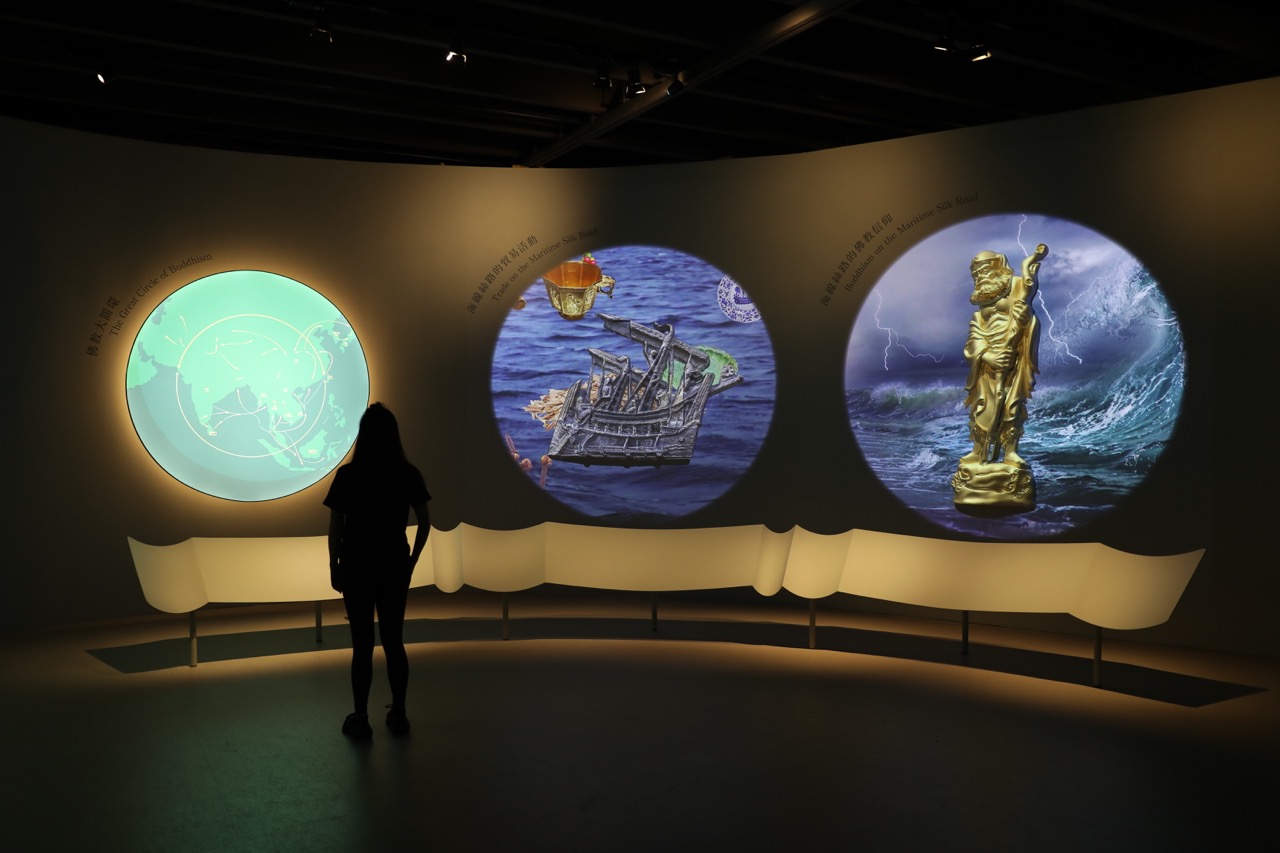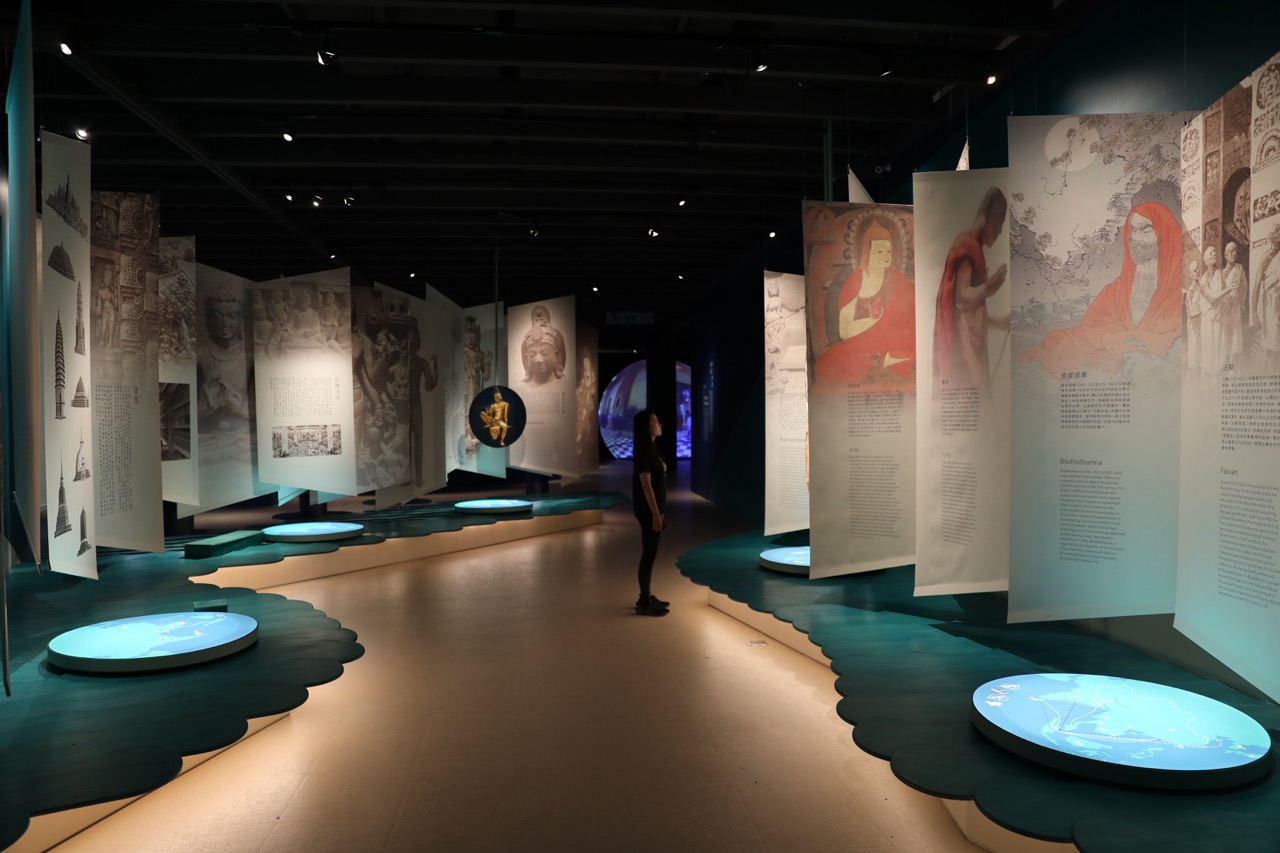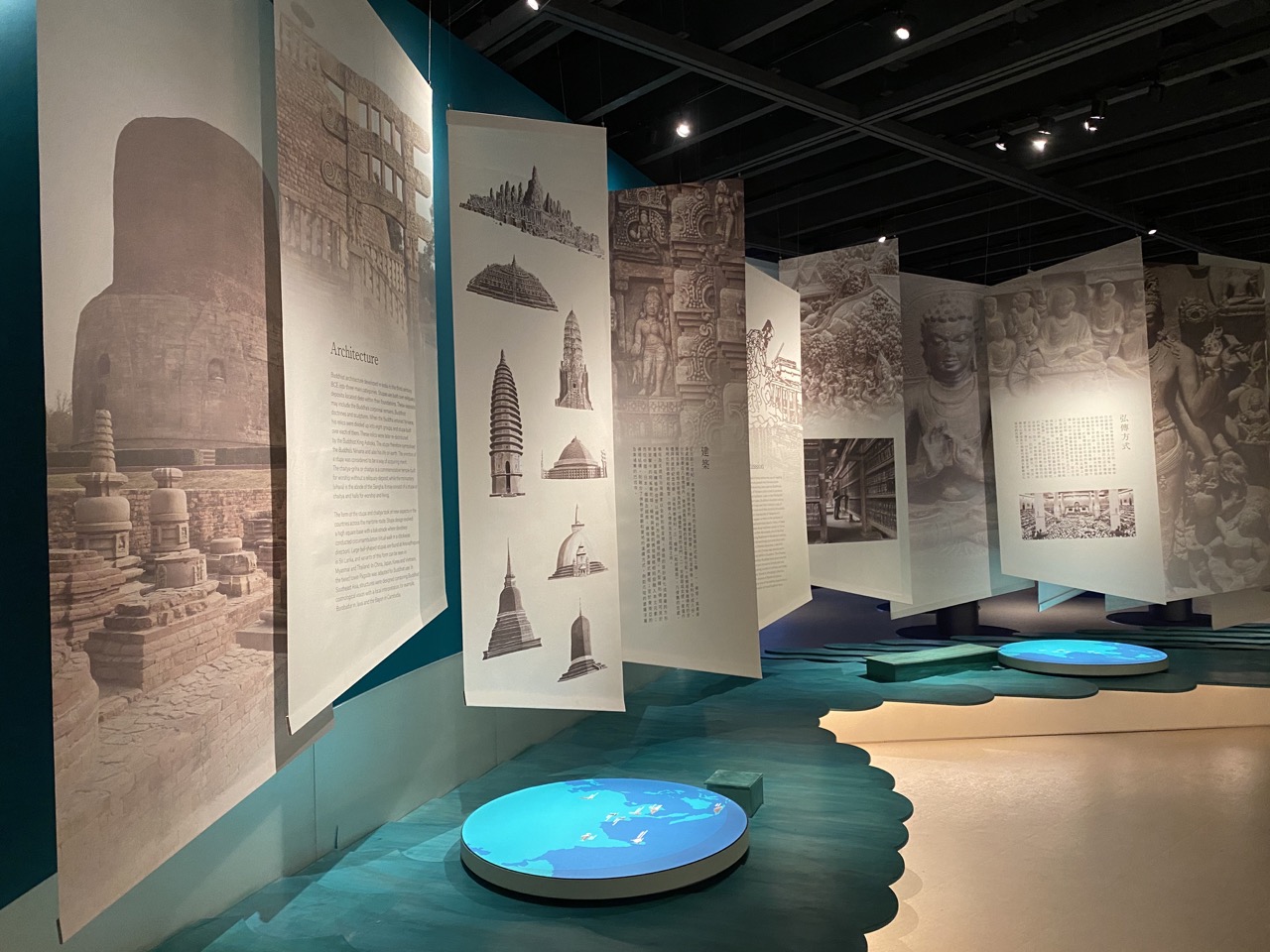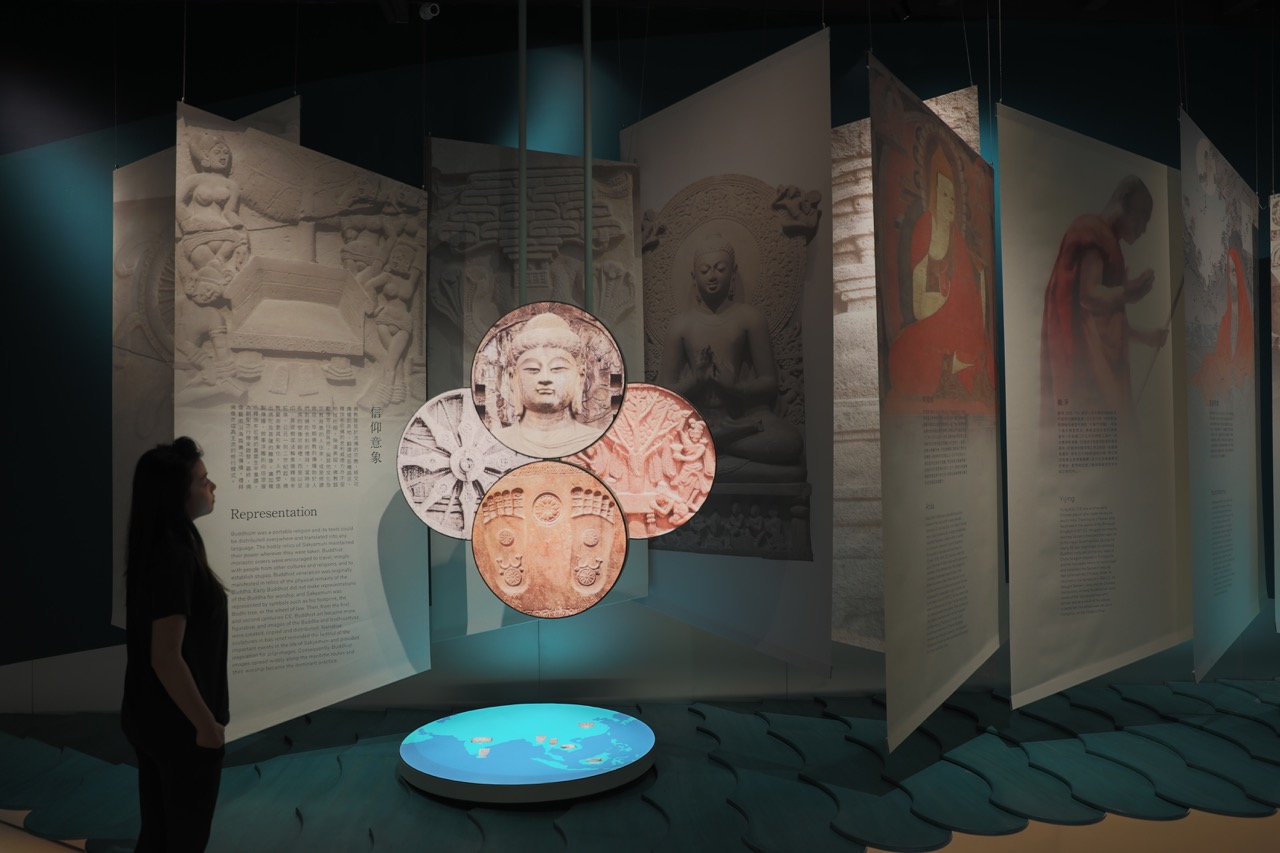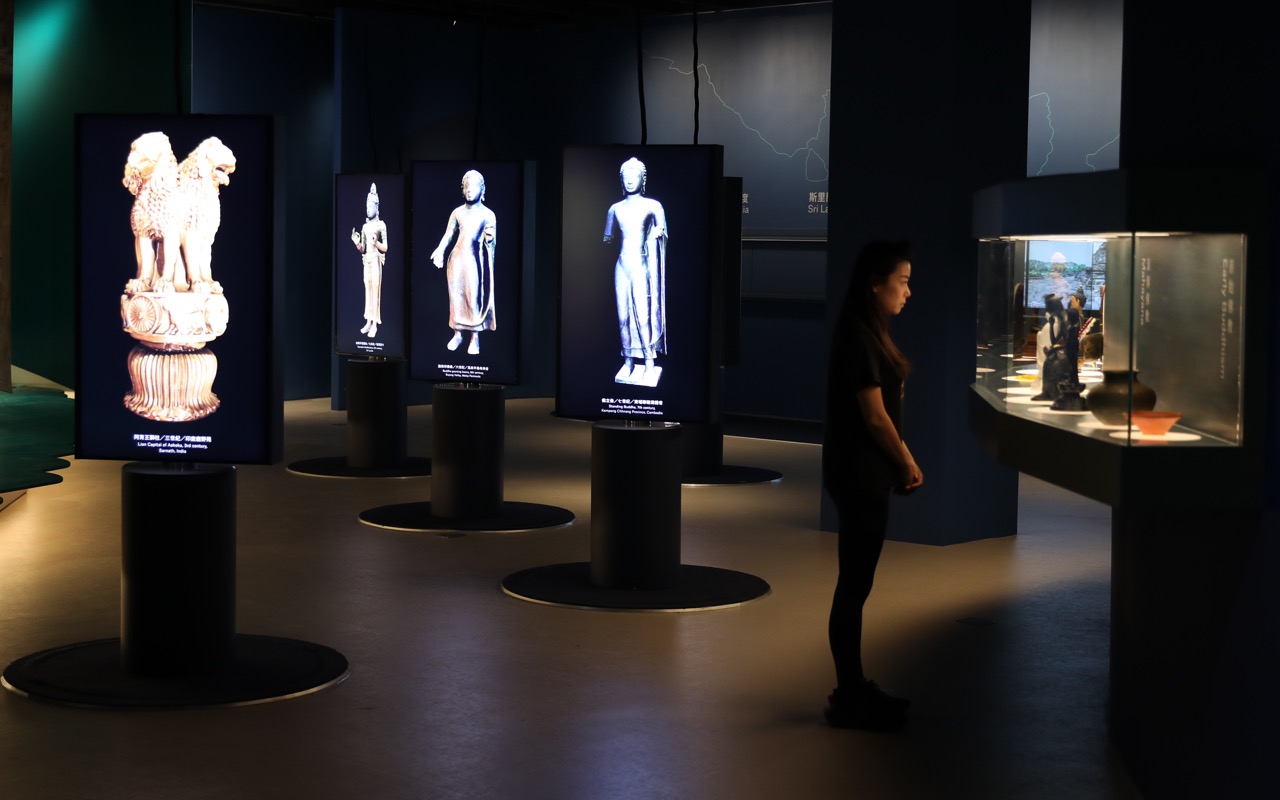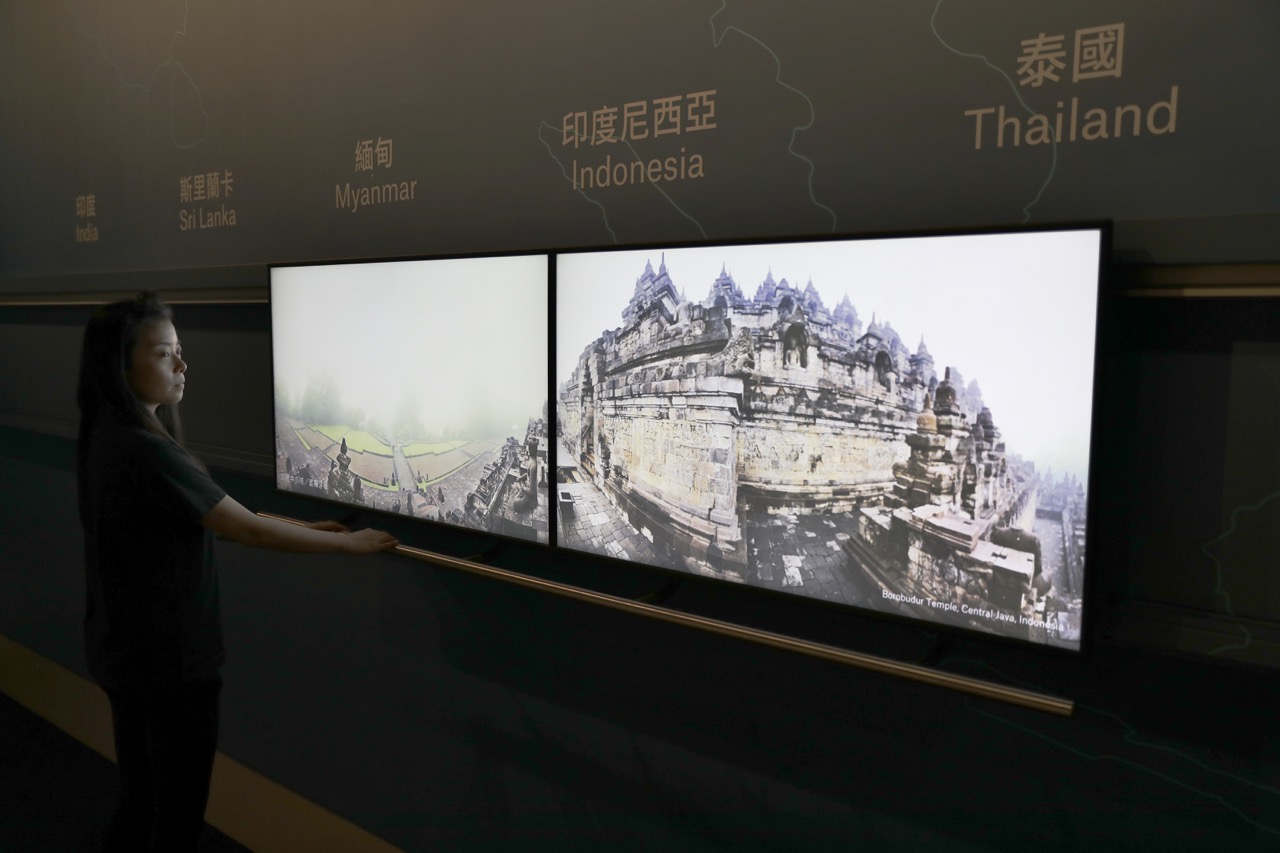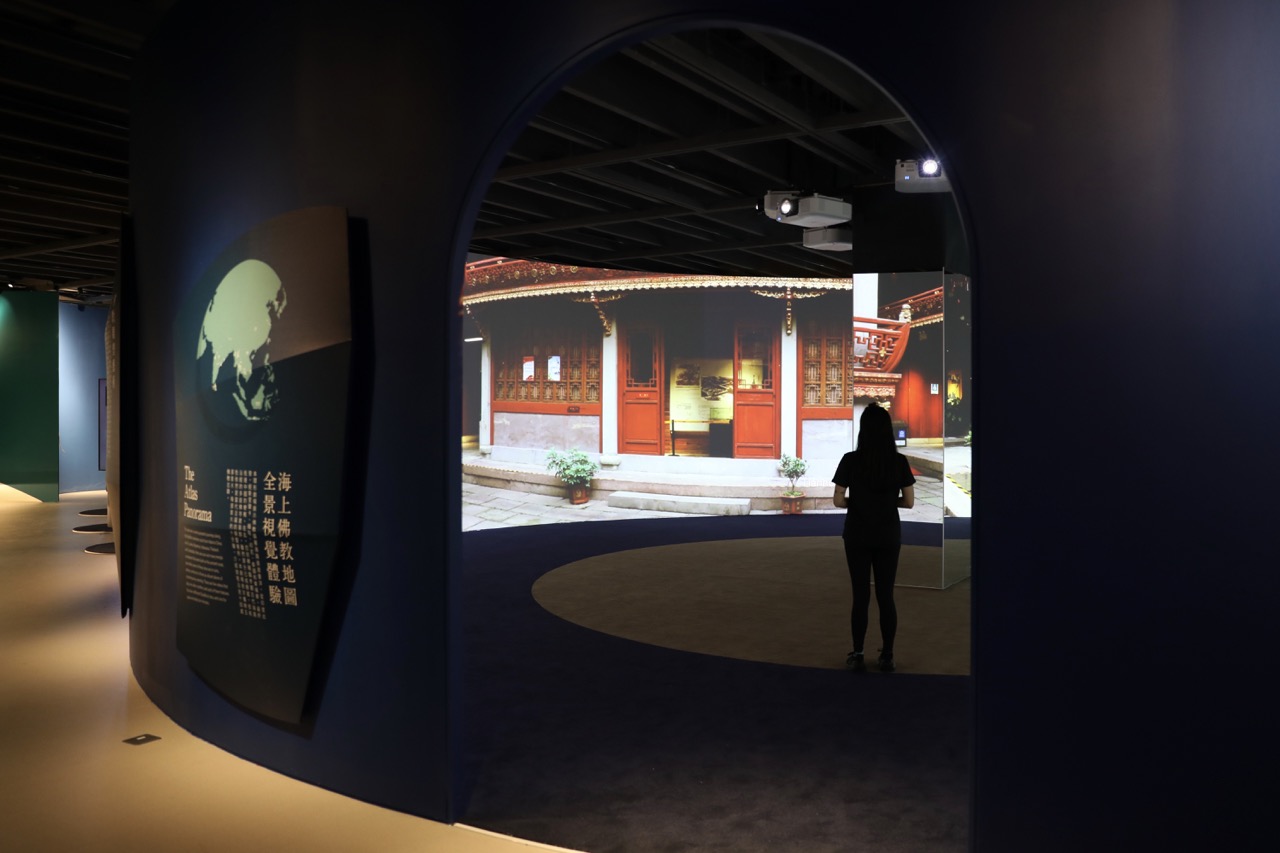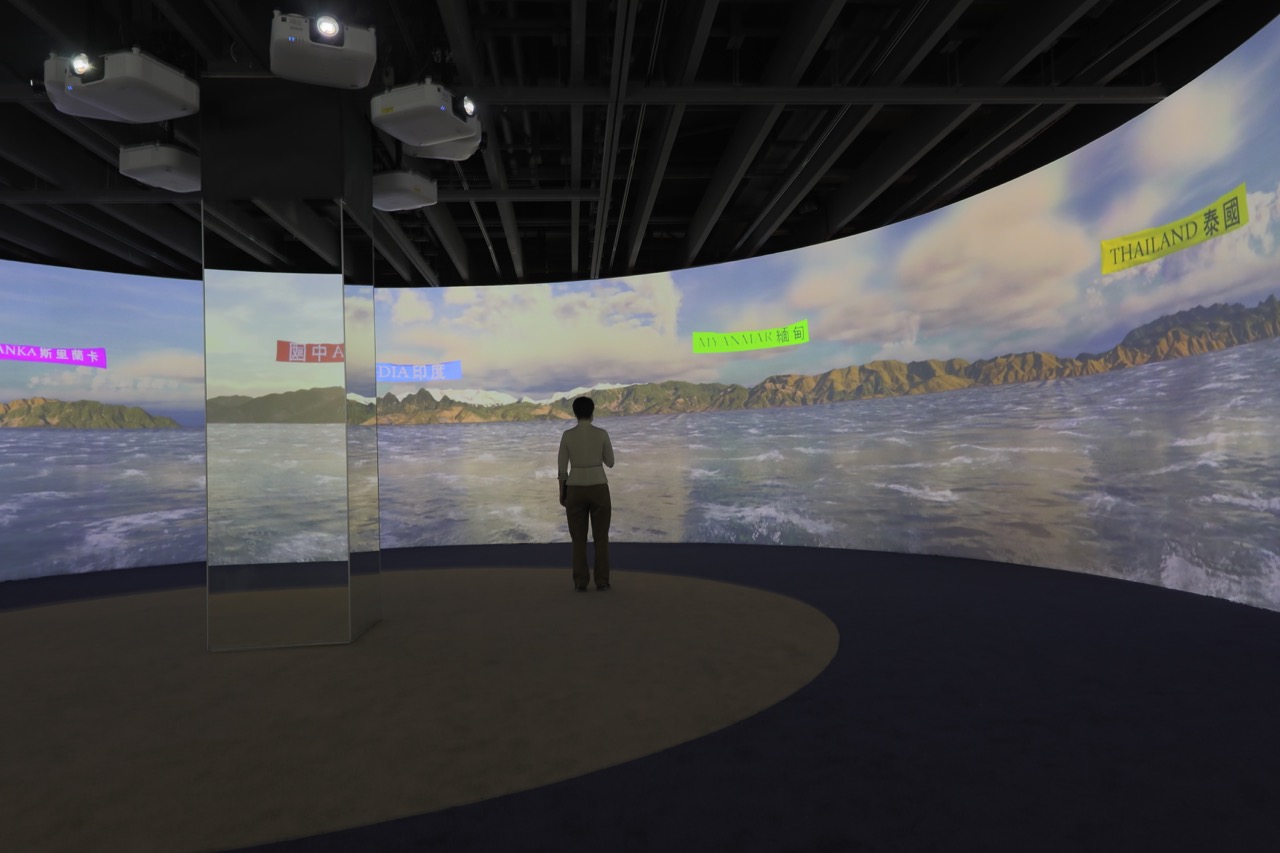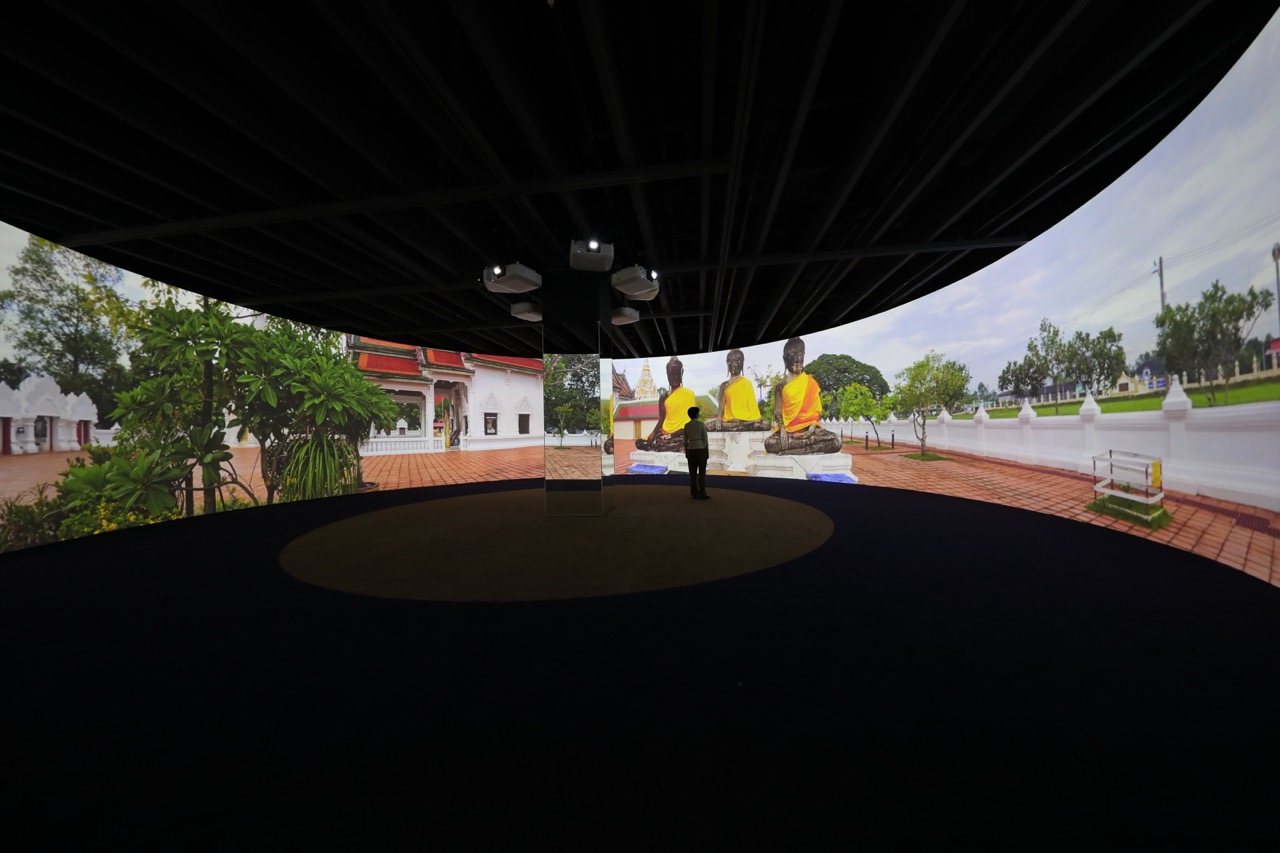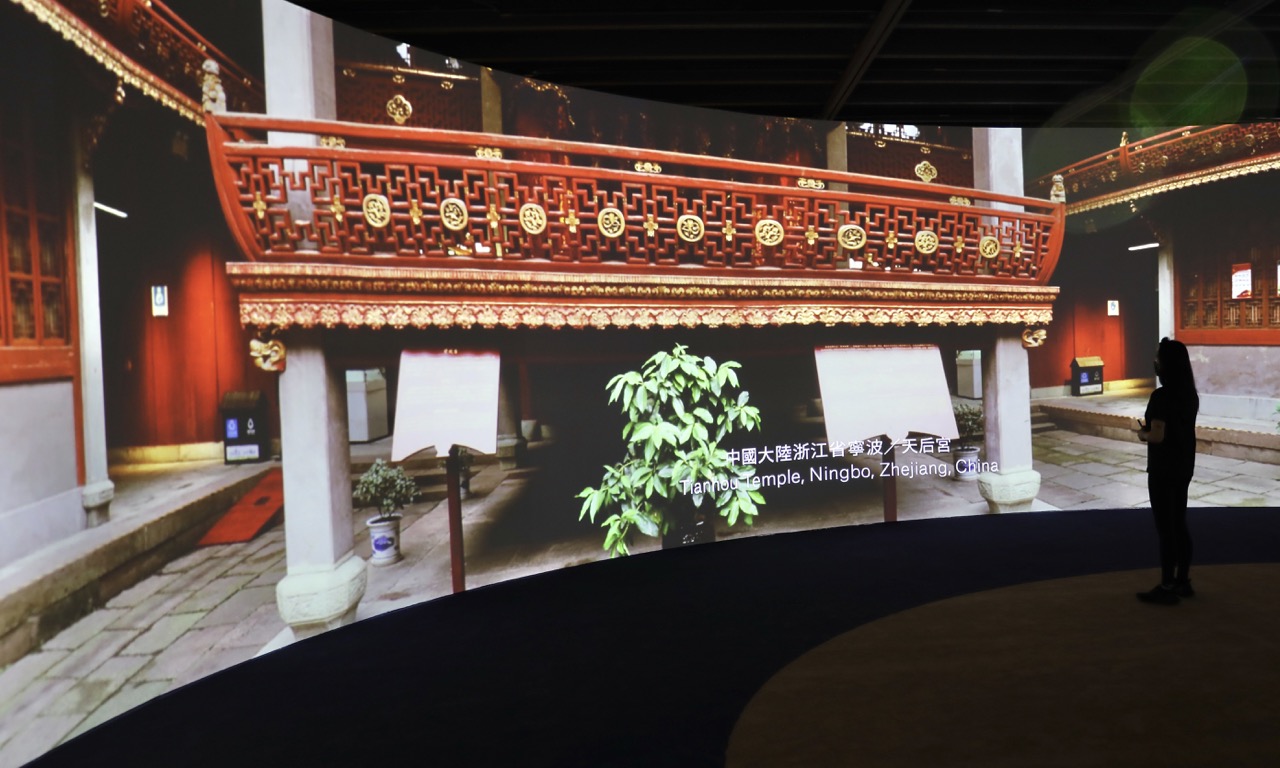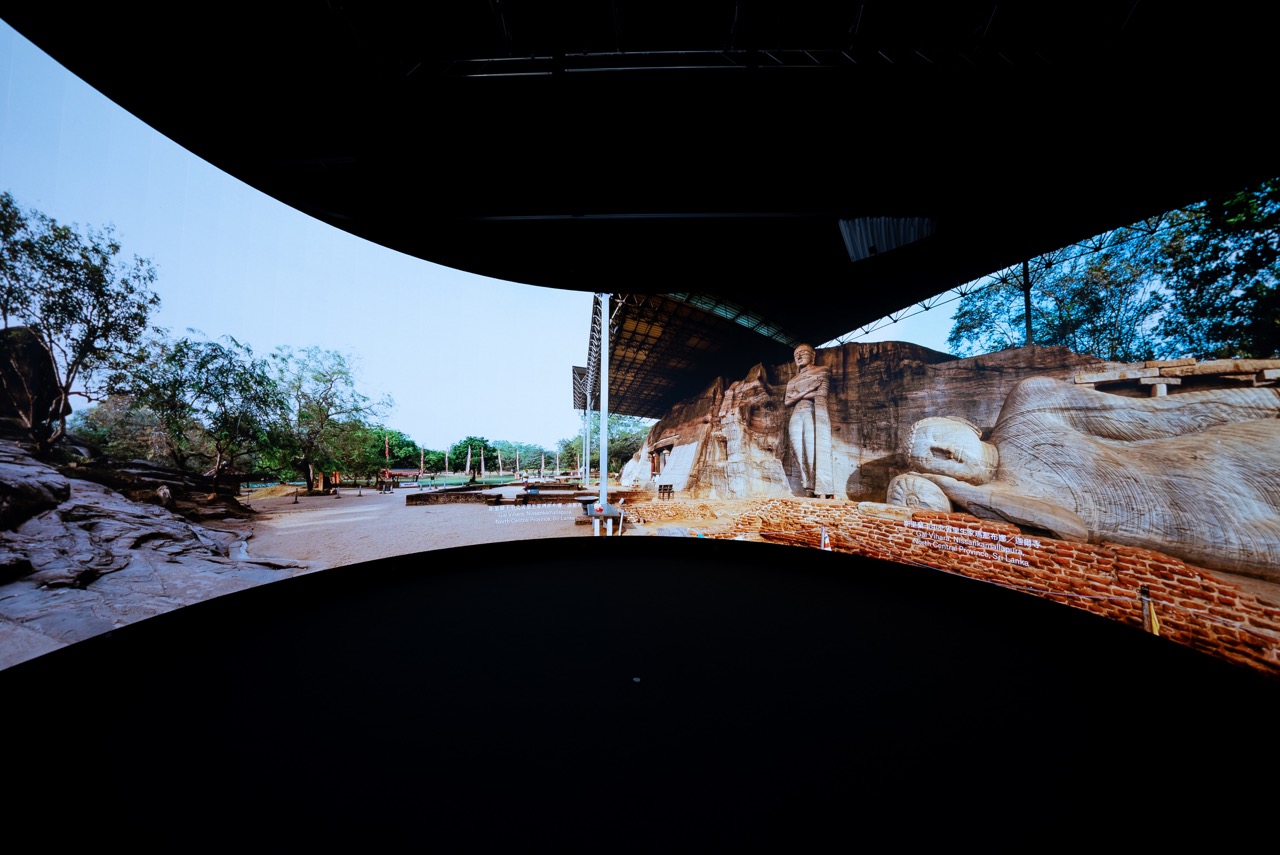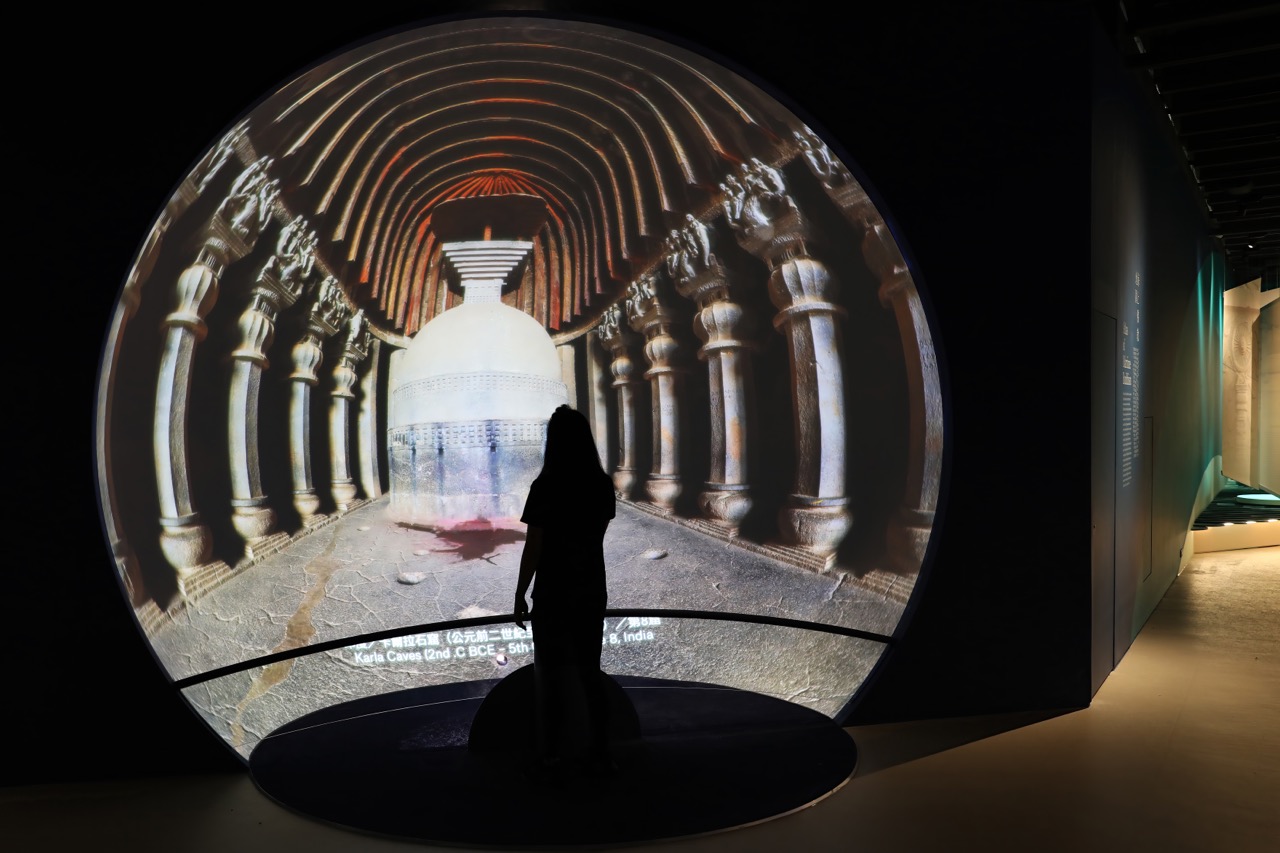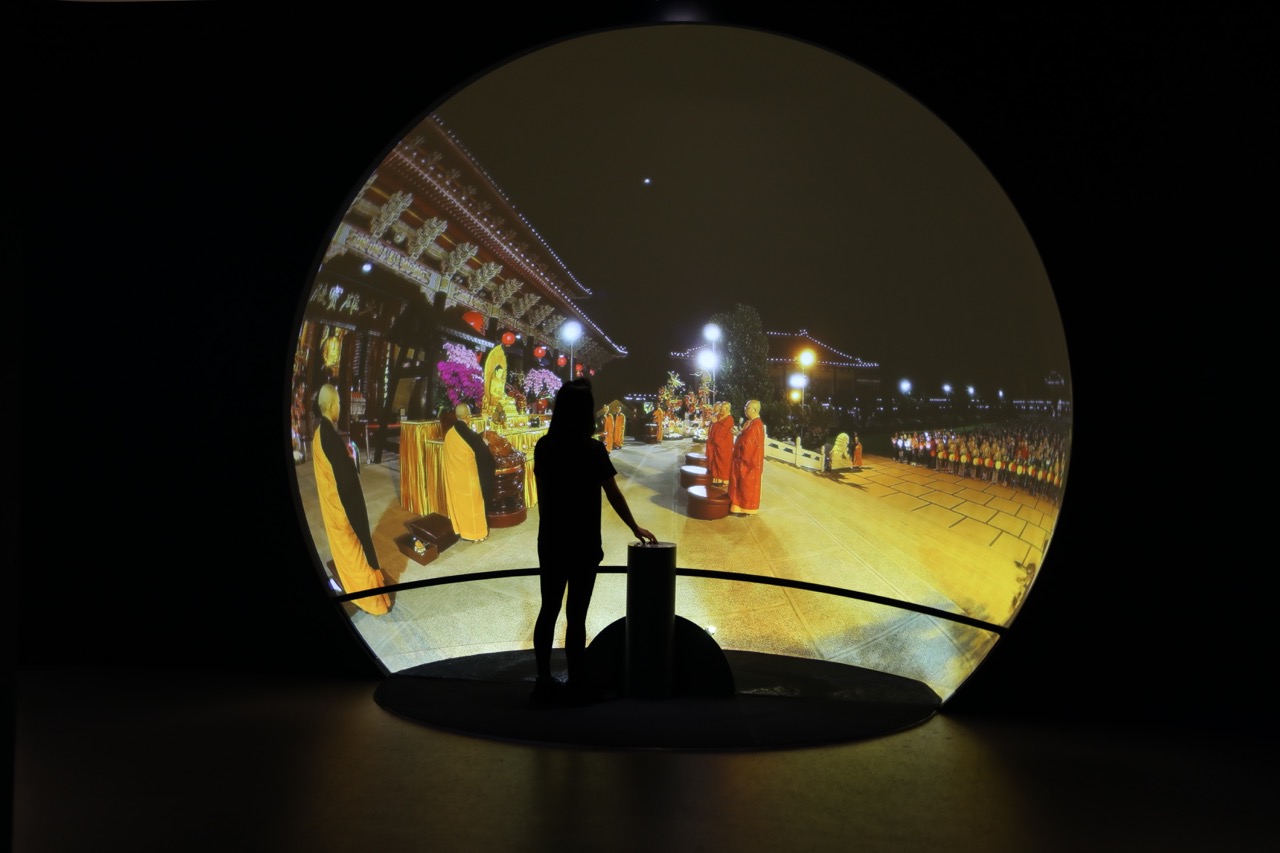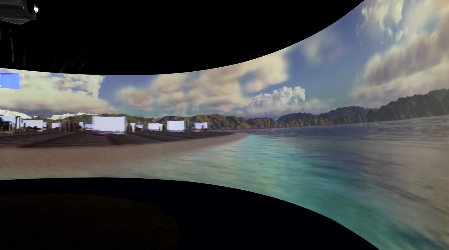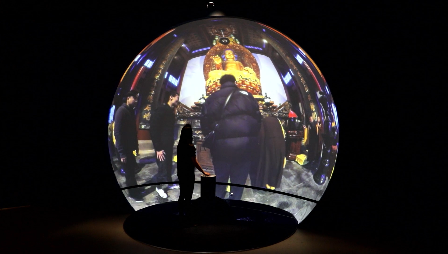The Buddhist Maritime Silk Road
2021 I Fo Guang Shan Buddha Museum, Kaohsiung, Taiwan
The Buddhist Maritime Silk Road is a permanent museological presentation of the Atlas of Maritime Buddhism. New media art plays a pivotal role in this exhibition setting out to fully engage the viewer in an embodied experience. A highlight of the exhibition is its 15m diameter 360-degree panoramic cinema that presents journeys along the Buddhist maritime route between India and China. A wide-screen Linear Navigator, two iDomes and an assembly of displays showing life-size photogrammetric animations of Buddhist sculptures are also mediamatic features of this exhibition. Since its launch in 2020, the exhibition has received over 2.5 million visitors.
A highlight of the exhibition, its 15m diameter 360-degree panoramic cinema presents journeys along the Buddhist maritime route from India to China via Sri Lanka, Myanmar, Indonesia, Thailand and Cambodia. Here one can visit many temple complexes that were built on this ancient route, and while some of these sites are in ruins, others continue to thrive as vibrant sites of contemporary worship. Another set of these panoramic images is presented on the Linear Navigator, where the physical trajectory of the screen encompasses a cross-Asia journey to Buddhist sites starting in India and ending in China.
One of the exhibition’s iDome installation presents Buddhist rituals and ceremonies that vary from country to country. In order to gain “merit” or good fortune, gifts are made including food and flowers, while chanting is the traditional means of preparing the mind for meditation. A second iDome shows gigapixel spherical images of the most famous Indian Buddhist caves. New forms of dynamic, spatialised narrative are generated while travelling through this exhibition, created by the viewer, as they discover relationships embedded in the archaeological, historic and contemporary materials of the Atlas. Freed from a linear framework of knowledge production, this design strategy opens up a myriad of powerful possibilities for museum audiences to explore atlases and discover their cultural treasures through emerging patterns, relationships and juxtapositions.
One of the exhibition’s iDome installation presents Buddhist rituals and ceremonies that vary from country to country. In order to gain “merit” or good fortune, gifts are made including food and flowers, while chanting is the traditional means of preparing the mind for meditation. A second iDome shows gigapixel spherical images of the most famous Indian Buddhist caves. New forms of dynamic, spatialised narrative are generated while travelling through this exhibition, created by the viewer, as they discover relationships embedded in the archaeological, historic and contemporary materials of the Atlas. Freed from a linear framework of knowledge production, this design strategy opens up a myriad of powerful possibilities for museum audiences to explore atlases and discover their cultural treasures through emerging patterns, relationships and juxtapositions.


